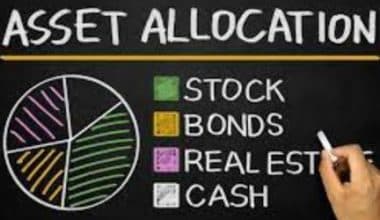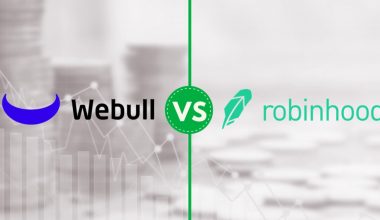Being an investor is one of the ways to make money and build lasting wealth. But what does it even mean to be an investor? Chances are that you have even used the word several times without knowing what it means. But not to worry, we’ll explain what it means to be an investor and how it relates to various sectors like real estate. You’ll also learn how to build your investment portfolio as an investor, and how to create a pitch deck for potential investors.
What Is An Investor, In Simple Terms?
An investor is a person or entity that invests money in a business with the hope of profiting. A commitment can take numerous forms, including a pledge to pay creditors, a loan, an equity investment, actual assets, or even labor involvement. An investor often makes a commitment in exchange for either a fixed return (such as dividends or interest) or the possibility of eventually selling its investment to a third party for a better price than the original investment.
An investor might be either an individual or a business. A company could, for example, donate capital to a joint venture, making the company an investor in the joint venture.
How Does Having an Investor Work?
Investors are not all the same. They differ in risk tolerance, capital, styles, preferences, and time frames. Some investors, for example, may favor low-risk assets that yield conservative returns, such as certificates of deposit and certain bond securities.
Other investors, on the other hand, are more willing to take on extra risk in order to achieve a larger reward. These investors may invest in currencies, emerging markets, or stocks, all while dealing with a variety of daily factors.
Institutional investors are companies that develop large portfolios of stocks and other financial instruments, such as financial businesses or mutual funds. They are frequently able to collect and pool funds from a number of smaller investors (individuals and/or businesses) in order to make larger investments. As a result, institutional investors frequently wield significantly more market power and influence than individual retail investors.
Passive Investors vs Active Investors
A passive investor buys shares in a market index with the intention of benefiting from large fluctuations in the returns provided by all businesses in that index. They are not concerned with stock selection, preferring a hands-off approach that entails making an investment and then holding it for an extended length of time.
Active investors investigate specific securities and their issuers to identify circumstances where value has not been completely realized by the market and where they can profit. This entails a thorough examination of an issuer’s financial statements as well as an industry study for the industry in which the issuer operates.
What Are the 4 Types of Investors?
#1. Angel Investors
An angel investor is a wealthy individual who provides financial backing to a startup or entrepreneur. The capital is frequently supplied in exchange for a stake in the company. Angel investors might make a one-time or continuing financial contribution. An angel investor often contributes funds in the early phases of a new enterprise when risk is high. They frequently devote excess funds to high-risk investments.
#2. Venture capitalists
Venture capitalists are private equity investors who seek to invest in startups and other small enterprises. They usually take the shape of a firm. Unlike angel investors, they do not aim to support businesses in their early phases in order to assist them to get started, but rather look at organizations that are already in their early stages and have the potential for growth. These are businesses that want to grow but lack the resources to do so. In exchange for their investment, venture capitalists desire an equity stake in the company, which they subsequently sell for a profit.
#3. Peer-to-peer lending
P2P lending, also known as peer-to-peer lending, is a type of financing in which loans are obtained from other individuals rather than from a typical middleman, such as a bank. Crowdsourcing is an example of P2P lending, in which firms seek to obtain funds from a large number of investors online in exchange for products or other benefits.
#4. Individual Investors
A personal investor is any individual who invests on their own and can take many different forms. A personal investor is someone who invests their own money, typically in stocks, bonds, mutual funds, and exchange-traded funds (ETFs). Personal investors are individuals who seek higher returns than ordinary investment vehicles such as certificates of deposit or savings accounts.
What Is a Real Estate Investor?
A real estate investor is someone who invests money in real estate. To make a profit, you buy and sell properties, manipulate their valuations, collect rents, and lobby politicians and government land-use authorities. You can work as an individual investor, with a partner, or as part of an investor network. If you have sufficient expertise and experience, companies or individuals may employ you to manage their property portfolios or advise them on property investment plans. Your main issue is the increase in land value.
How to Become a Real Estate Investor
There are no educational requirements to become a real estate investor; the only actual prerequisite is enough funds to invest. To be successful, you must understand the real estate market and be able to decide when a property is a viable investment based on market conditions and property prices in the surrounding area. You could wish to start by collaborating with a partner or an investment group, as this offers you a larger opportunity to inflate land values artificially by supporting more police services, investing from luxury firms, and advertising to property purchasers.
What Is the Career Path for a Real Estate Investor?
Working as a real estate agent, real estate broker, or mortgage broker might help a real estate investor learn about the sector. If you have such experience, you may find it easier to join a group or an investment network. When you buy a home, you’ll need money for a down payment and good credit to get the necessary financing. This need implies that you will require funds to begin your career; in fact, adequate capital might substitute for experience. Once you start recouping your investments, you can use your profits to buy more properties, form investment groups or partnerships, earn rental income, and act as a consultant for other investors.
What Makes a Good Real Estate Investor?
As a real estate investor, you must undertake the essential due diligence to ensure lucrative investments while limiting financial risks. You must have a defined investment strategy in place, and you must avoid investments that do not satisfy your predetermined criteria. Most great real estate investors begin their careers with the assistance of mentors who can help them develop successful strategies and demonstrate how to conduct the essential research to ensure successful deals. The single most significant factor for the success of a real estate investor is having access to a large amount of surplus capital.
Investment Portfolio
An investment portfolio is a grouping of assets that may include stocks, bonds, mutual funds, and exchange-traded funds. An investment portfolio is an idea rather than a physical space, especially in the age of digital investing, but it can be useful to conceive of all your assets as being housed under one metaphorical roof.
For example, if you have a 401(k), an individual retirement account, and a taxable brokerage account, you should consider how to invest them all together.
Investment Portfolio and Risk Tolerance For an Investor
When developing a portfolio as an investor, one of the most crucial factors to consider is your personal risk tolerance. Risk tolerance refers to your willingness to endure investment losses in exchange for the chance of better investment returns.
Your risk tolerance is determined not only by the amount of time you have before a financial goal, such as retirement but also by how you mentally handle watching the market rise and fall. If your target is many years away, you will have more time to ride through the market’s highs and lows, allowing you to capitalize on the market’s overall upward trend.
How to Create an Investment Portfolio as an Investor
#1. Determine how much assistance you require.
If the prospect of creating an investment portfolio from start sounds daunting, you can still invest and manage your money without going the DIY route. Robo-advisors are a low-cost option. They construct and manage an investment portfolio for you as an investor based on your risk tolerance and overall goals.
#2. Select an account that will help you achieve your objectives.
An investment account is required to construct an investment portfolio.
There are various sorts of investment accounts. Some, such as IRAs, are intended for retirement and provide tax benefits for the money invested. Nonretirement goals, such as a down payment on a house, are best served by regular taxable brokerage accounts. If you need money and expect to invest it within the next five years, a high-yield savings account may be a better option. Before you choose an account, think about why you’re investing. You can start an IRA or brokerage account with an online broker – here are some of our best IRA selections.
#3. Base your investment decisions on your risk tolerance.
After you’ve opened an investment account, you’ll need to stock your portfolio with the actual assets in which you intend to invest. Here are some examples of common sorts of investments.
Stocks
Stocks are a small portion of a company’s ownership. Investors purchase equities that they anticipate will appreciate in value over time. The danger, of course, is that the stock will either not rise at all or will fall in value. To help limit that risk, many investors invest in stocks through funds that hold a portfolio of equities from a wide range of firms, such as index funds, mutual funds, or ETFs. Individual equities should typically account for no more than 5% to 10% of your portfolio.
Bonds
Bonds are loans made to firms or governments that are repaid with interest over time. They are regarded to be safer investments than stocks, although their returns are often lower. Bonds are classified as fixed-income investments because you know how much interest you’ll receive when you buy them. Bonds having a fixed rate of return might help to balance out riskier investments like equities in an investor’s portfolio.
Mutual funds
You can invest in a variety of mutual funds, but their main advantage over buying individual equities is that they provide instant diversity to your portfolio. Mutual funds enable you to invest in a basket of securities, such as stocks or bonds, all at once. Mutual funds do carry some risk, although they are less dangerous than individual equities. Some mutual funds are actively managed, however, they often have higher costs and do not consistently outperform passively managed funds, sometimes known as index funds.
#4. Determine your optimal asset allocation.
So you know you want to invest primarily in funds, with some bonds and individual stocks thrown in for good measure, but how do you determine how much of each asset type you require? The way you divide your portfolio across different types of assets is known as asset allocation, and it is heavily influenced by your risk tolerance.
You may have heard advice on how much money to put into equities vs bonds. To establish how much of your portfolio should be committed to stock investments, commonly quoted rules of thumb recommend subtracting your age from 100 or 110. For example, if you are 30, these principles indicate that you devote 70% to 80% of your portfolio to equities, leaving 20% to 30% for bond investments. When you reach your 60s, the allocation shifts to 50% to 60% stocks and 40% to 50% bonds.
How to Make an Investor Pitch Deck
The pitch deck (also known as a slide deck or pitch slide deck) is the first communication tool you will use to assist you to seek funds from a possible investor. The content of your pitch deck, together with your presentation, can assist the investor in deciding whether or not to continue investigating your company’s potential.
Your pitch deck should complement your business plan, but it should not be a rehash of it. Instead of using PowerPoint or Keynote, consider sketching down the content of the slides on a whiteboard. Check that the text flows well.
The purpose of the first meeting with the pitch deck is to entice the investor to take the next step with you.
The next step in the pitch deck could be to conduct additional due diligence, suggest you to another investor, or introduce you to a strategic partner. Expect no more input if the investor is unwilling to invest further in the opportunity.
Check out our next post for more on how to find an investor.
Tips for Creating an Effective Pitch Deck For An Investor
- Include no more than a few slides about your technology.
- Avoid making assertions that are routinely heard by all investors, such as “We will be successful if we get one percent of the overall market” or “We will have first-mover advantage.”
- The 10/20/30 approach applies to all elements of pitching as an entrepreneur, such as making sales, forming partnerships, attracting workers, and getting suppliers to sell to you.
- Remember, “Life is a pitch!” for an entrepreneur.
How Do Investors Make Money?
Investors generate money in two ways: through appreciation and through income. When the value of an asset rises, this is referred to as appreciation. An investor buys an asset in the belief that its value will rise and they will be able to sell it for more than they paid for it, generating a profit. The recurring payment of monies from the acquisition of an item is referred to as income. A bond, for example, makes set payments at regular intervals.
How Much Money Do Investors Make?
Among Stock Investors, 57% make between $100,799 and $254,138, while 86% make $560,998 or more
What Makes a Successful Investor?
A specific set of talents is required to be a successful investor. These include diligence, patience, knowledge acquisition, risk management, discipline, optimism, and goal planning.
Is An Investor An Owner?
Lending investors are not owners. By purchasing equity in a company, you are making an ownership investment. You will earn a proportionate share of the business’ profits. The initial investment amount will remain a part of the company’s value.
What is active investing?
Active investing refers to a strategy where an investor actively chooses and manages their own investments, as opposed to a passive investing strategy where the investor simply buys and holds a diversified portfolio.
What is passive investing?
Passive investing is a strategy where an investor primarily buys and holds a diversified portfolio, such as an index fund, rather than actively choosing and managing their own investments.
What is the difference between short-term and long-term investing?
Short-term investing typically refers to investments that are held for a shorter period of time, such as a few months or a year. Long-term investing refers to investments that are held for a longer period of time, such as several years or more.
What is the difference between high-risk and low-risk investing?
High-risk investing typically refers to investments that have a higher potential for loss, but also a higher potential for gain. Low-risk investing refers to investments that have a lower potential for loss, but also a lower potential for gain.
How do I determine my risk tolerance?
Your risk tolerance is personal and it depends on your financial goals, time horizon, and personal circumstances. You can determine your risk tolerance by considering your willingness and ability to take on risk and your capacity for loss.
How can I protect my investments from market fluctuations?
Investors can protect their investments from market fluctuations by diversifying their portfolios, setting stop-loss orders, and having a long-term investment horizon. Additionally, investors can also invest in low-volatility assets or invest in a balanced portfolio that includes both stocks and bonds, which can help to reduce overall portfolio volatility.
In Conclusion
An investor is a person or entity who uses his or her own money or the money of others in order to earn a profit. Investing can involve purchasing stocks or multibillion-dollar funds. At the end of the day, the main goal is to make more money and build wealth. As a business owner, you can increase your chances of getting an investor by creating a good pitch deck, and we have taught you to do that in this article.
Frequently Asked Questions
Can investing make you rich?
Investing has proven to be one of the simplest ways to become rich.
Where do rich people invest?
Rich people invest in private and commercial real estate, land, money, and even artwork.
What happens to investors if a company fails?
Unless a tiny piece of their investment is redeemed through the sale of any company assets, investors will often lose all of their money.
Related Articles
- PORTFOLIO MANAGEMENT SOFTWARE: Top Investment Software In 2023
- Best Skateboard Brands For Beginners & All You Need
- Sales Pitch: How To Write Sales Pitch (+Detailed Examples)
- High Yield Investments: How to Spot High Yield Investments
- BUSINESS PRESENTATION: Meaning, Types, and How to Start Example






